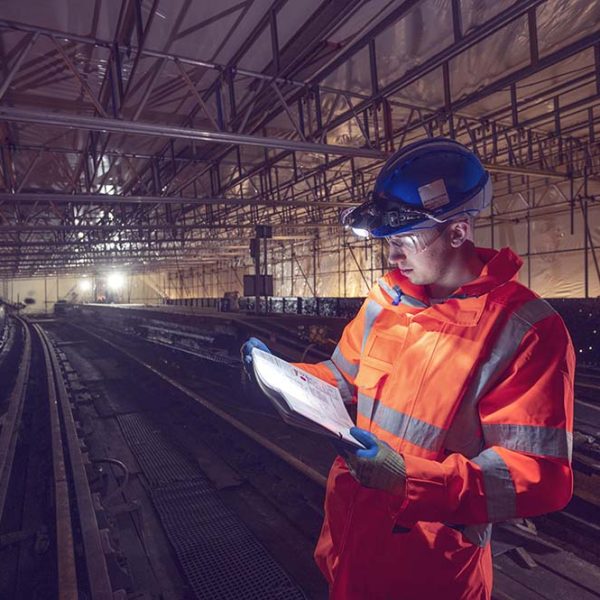Following successfully completing major refurbishment works and reopening Ryde Pier Head Station earlier this year, our project team have now commenced refurbishment and renewal works on the first 11 bays on the substructure under the pier. This includes cleaning the columns that have become rusted and dirty over time, preparing them for application of protective coating and repainting which will give another zone of the pier a new lease of life.
As a Site of Special Scientific Interest (SSSI) the team have had to think differently to carry out this major task efficiently and without impacting the sea water therefore, implemented a non traditional method discharge method of Ultra High-Pressure jetting (UHP). Working closely with the Environment Agency the team have obtained a water discharge license agreement which allows 10m3 of water per day to be discharged into the sea potentially containing old paint and metal fines from the pier. The water is filtered through a membrane material to catch as much as possible. To ensure that the sea doesn’t become contaminated from the descaled paint that is being released into the sea independent checks are regularly carried out to test the sea water for changing metal levels or any adverse effects to the pH levels and saline levels. This advanced method has not only allowed the task to be carried out quicker it has also reduced the need for several colleagues to use manual tools.
Recognising that the jetting can be extremely noisy the team have gone that extra mile to make sure members of the public remain safe and comfortable whilst the activity is being carried out in the open offshore area. A DECT (Digital Enhanced Cordless Telecommunications) communication system has been put in place where throughout the shift one team member is positioned on the Ryde Esplanade Station platform, while another operator is positioned by the UHP unit on the beach. Whenever a train arrives at or departs from the station platform, or when members of the public are passing by UHP operations are temporarily stopped. Although regularly stopping and restarting works reduces valuable working time, the use of UHP jetting has saved several hours of time compared to manually carrying out the cleaning works.
Well done to everyone involved for thinking differently, implementing better and more efficient solutions that protect our environment and with minimal disruption to members of the public.
